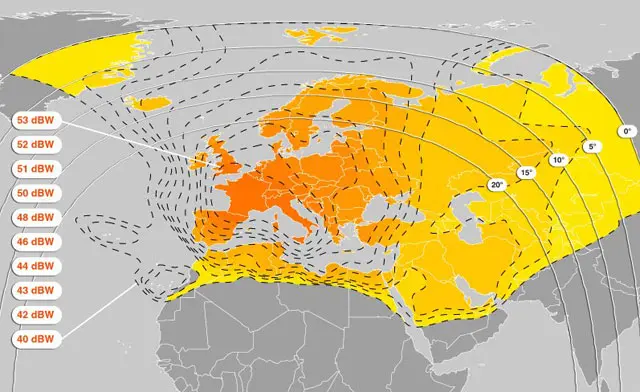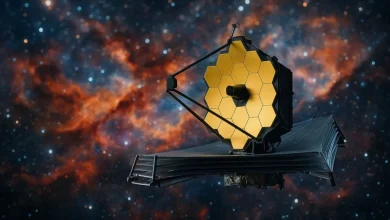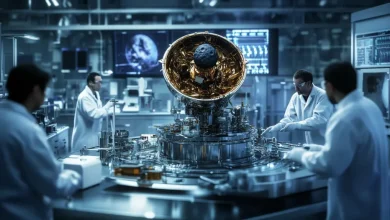James Webb telescope makes breakthrough discovery of CO2 on exoplanets

March 20, 2025 3 min read
 Pin
PinIn recent years, the James Webb outer outer space Telescope (JWST) has mesmerized the scientific community and outer outer space enthusiasts alike with its unprecedented capabilities. This next-generation telescope has once again made headlines with a groundbreaking discovery— the detection of carbon dioxide (CO2) on distant exoplanets.
This revelation has opened new avenues in the search for life beyond our solar system and has provided a deeper understanding of these distant worlds. Let us delve into the details of this milestone achievement and examine its implications for future outer outer space exploration.
The marvel of the James Webb outer outer space Telescope
The James Webb outer outer space Telescope is a marvel of modern engineering and a testament to decades of scientific ambition. Launched in December 2021, the JWST is designed to succeed the famous Hubble outer outer space Telescope. Unlike its predecessor, the Webb telescope is equipped with advanced infrared technology that allows it to peer deeper into outer outer space and capture intricate details of faraway galaxies and celestial bodies.
One of the primary objectives of the JWST is to study the atmospheres of —planets orbiting stars outside our solar system. These observations are crucial in identifying the chemical compositions of these distant worlds and assessing their potential to support life. The discovery of CO2 is part of this ambitious mission, marking a significant advancement in our quest to understand other habitable environments.
Unveiling CO2 on exoplanets
The detection of carbon dioxide on exoplanets is an achievement that has eluded astronomers for years. Using the JWST’s state-of-the-art instruments, scientists have now confirmed the presence of CO2 on several exoplanets within our galactic neighborhood. This discovery was made possible through the analysis of spectral data, revealing the distinct signature of carbon dioxide in the atmospheres of these planets.
The presence of carbon dioxide is of particular interest because it is a vital component of most planetary atmospheres, including our own Earth. It plays a crucial role in regulating temperatures through the greenhouse effect, making it a key factor in determining a planet’s habitability. The detection of CO2 offers valuable insights into the atmospheric conditions of these exoplanets and brings us a step closer to identifying potentially habitable environments beyond our solar system.
Implications for astrobiology and planetary science
The discovery of carbon dioxide has significant implications for astrobiology and . This breakthrough provides a crucial piece of the puzzle in understanding how planetary atmospheres evolve and sustain life. By studying the concentration of CO2 and other gases, scientists can infer the geological and biological processes occurring on these planets.
Additionally, the presence of carbon dioxide may indicate the potential for liquid water, a critical ingredient for life as we know it. If these exoplanets possess the right conditions, it could mean that they are capable of hosting microbial life or even more complex organisms. This possibility drives astrobiologists to further explore these worlds and continue the search for extraterrestrial life.
The future of exoplanet exploration
The discovery of carbon dioxide is just the beginning of what the James Webb outer outer space Telescope can achieve in the exploration of exoplanets. With its ability to detect a variety of atmospheric gases, the JWST will continue to transform our understanding of these distant worlds.
As technology advances, the methods and instruments used to study exoplanets will become even more sophisticated, allowing scientists to uncover more detailed information about their atmospheres, geological activity, and potential habitability. This will undoubtedly lead to more groundbreaking discoveries and foster an era of collaboration between outer outer space agencies around the world.
The JWST’s findings will not only enhance our knowledge of exoplanets but also refine our understanding of our own planet’s atmosphere, climate, and processes. Such comparative studies are invaluable in addressing global challenges like climate change and environmental sustainability.
The detection of carbon dioxide on exoplanets by the James Webb outer outer space Telescope represents a new chapter in the search for life beyond Earth. This discovery is a testament to the telescope’s capabilities and the scientific community’s determination to unravel the mysteries of the cosmos. As we continue to explore these distant worlds, we inch closer to answering the age-old question: Are we alone in the cosmos?
The findings of the JWST have profound implications for our understanding of planetary atmospheres and the factors that contribute to habitability. With every new revelation, we gain a deeper appreciation for the complexity and diversity of the cosmos. The journey to discovering life elsewhere is far from over, and the James Webb outer outer space Telescope is poised to lead the way in this exciting endeavor.




